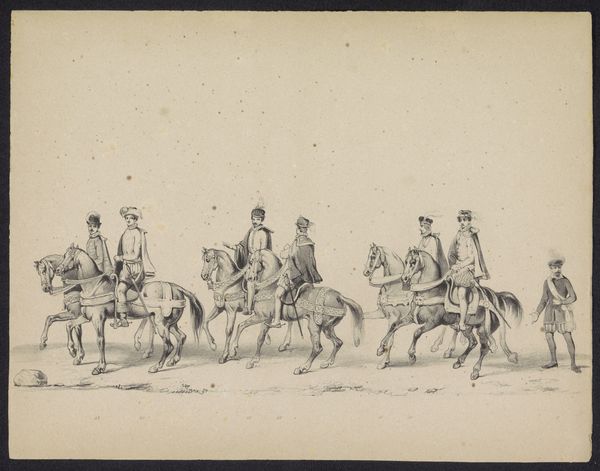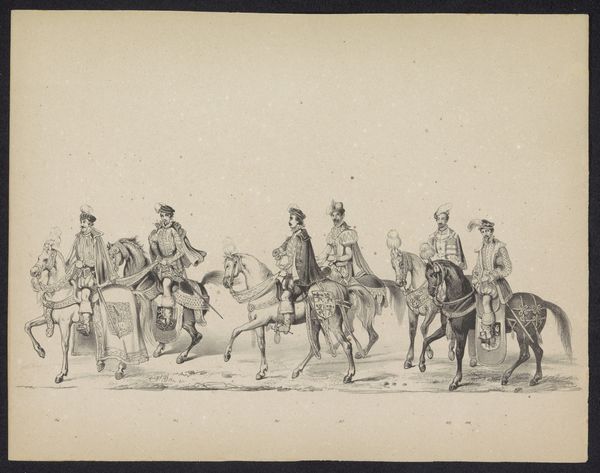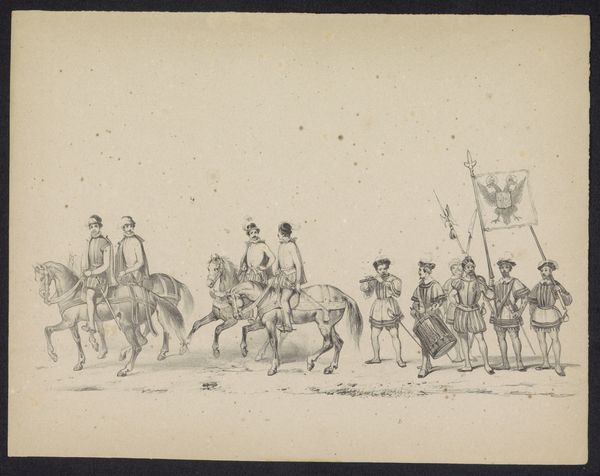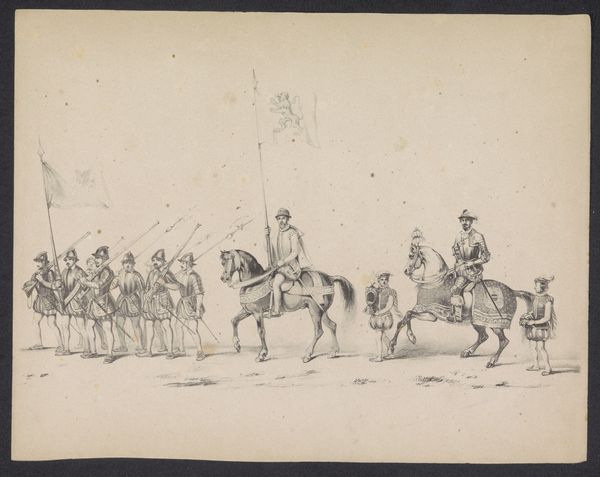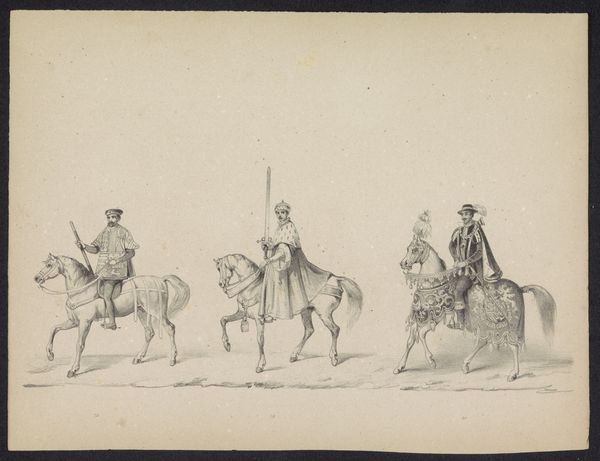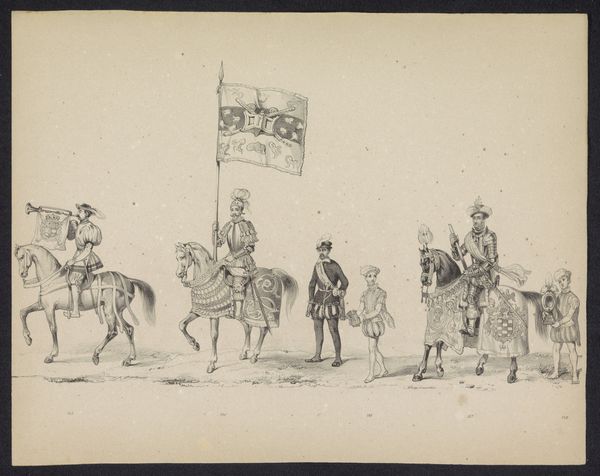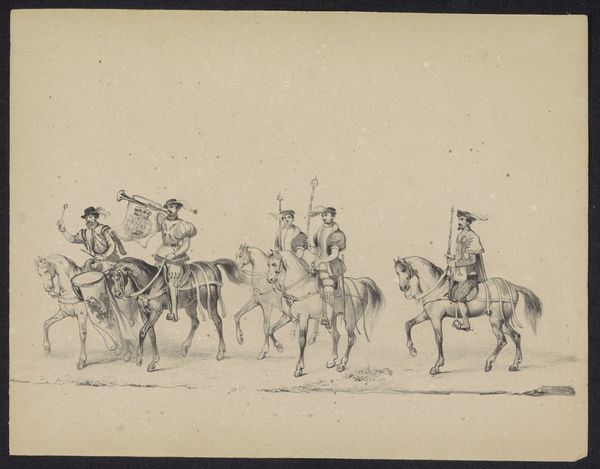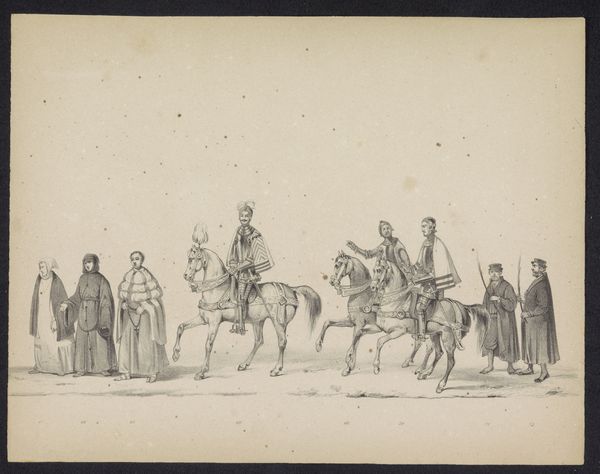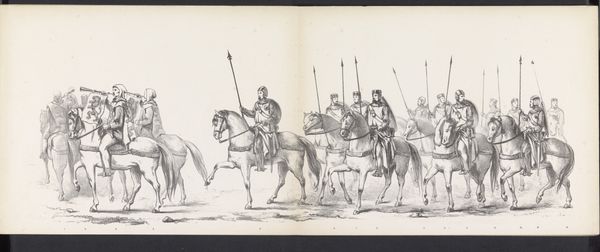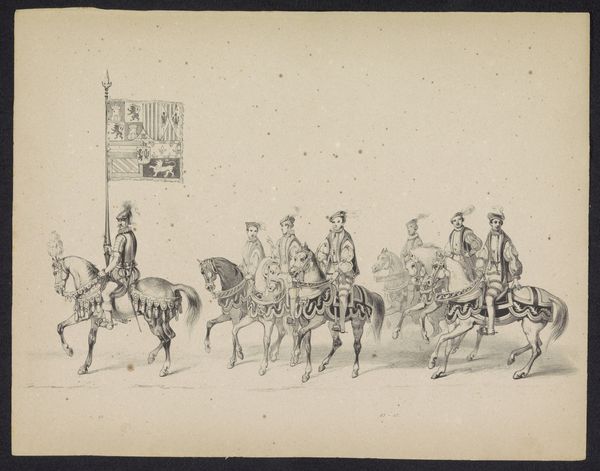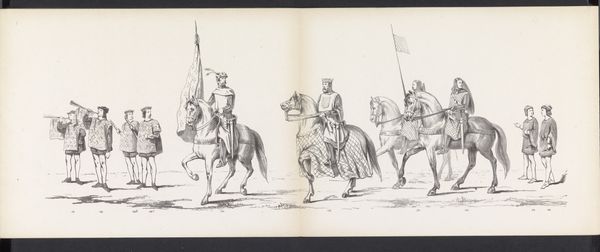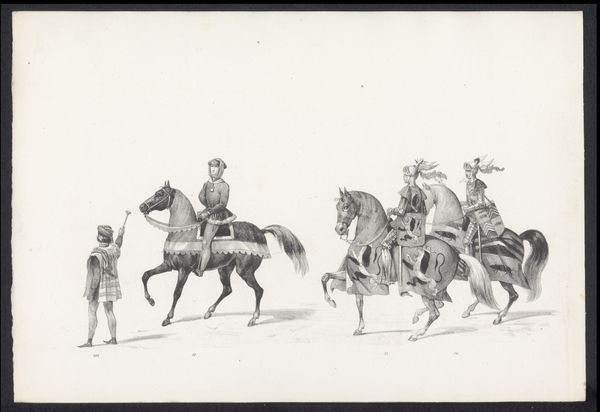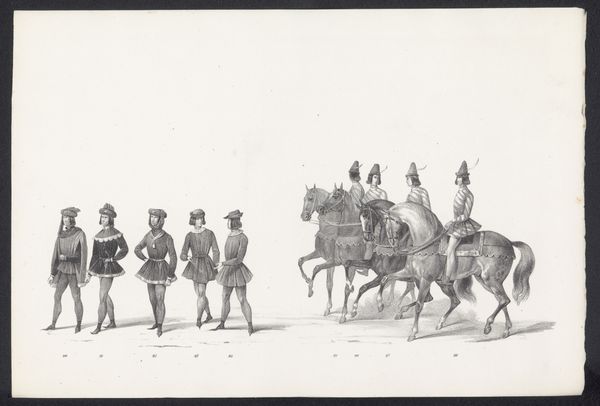
Maskerade van de Utrechtse studenten, 1846 (plaat 21) 1847
0:00
0:00
drawing, print, ink, engraving
#
drawing
#
ink drawing
# print
#
landscape
#
figuration
#
ink
#
history-painting
#
academic-art
#
engraving
Dimensions: height 240 mm, width 310 mm
Copyright: Rijks Museum: Open Domain
Editor: Here we have Carel Christiaan Antony Last’s "Maskerade van de Utrechtse studenten, 1846 (plaat 21)," created around 1847. It's an ink drawing or print of riders on horseback. It feels very formal, with a real emphasis on detail. What strikes you when you look at it? Curator: Formally, one might note the linear precision, the artist's focus on line and form above all. Observe how the composition emphasizes the repetition of shapes – the horses, the riders, even the banners – creating a rhythm that carries the eye across the image. Consider, too, the tonal range. Editor: I notice that the foreground figures are far more detailed, almost photorealistic in contrast with the background. Curator: Precisely. This creates a clear sense of depth and hierarchy within the composition. The artist uses contrast masterfully to direct the viewer's attention and create visual interest. How does the use of light and shadow contribute to this effect? Editor: Well, the figures at the front appear more dimensional as a result, and the horses further back begin to appear flatter... almost like silhouettes. This emphasizes the procession moving toward us, which is quite clever. I'm now curious about the intention of this work. Is it simply documentary, or is there something more to unpack here? Curator: One might also examine the interplay between the figures and the landscape – how does the artist use line and form to integrate them? In conclusion, by analyzing the artist's formal choices, we begin to understand the artist's message. Editor: I see what you mean! Thanks for guiding me through the art's construction. Curator: My pleasure; studying the arrangement of pictorial elements and the work’s visual structure always reveals the truth behind it.
Comments
No comments
Be the first to comment and join the conversation on the ultimate creative platform.
